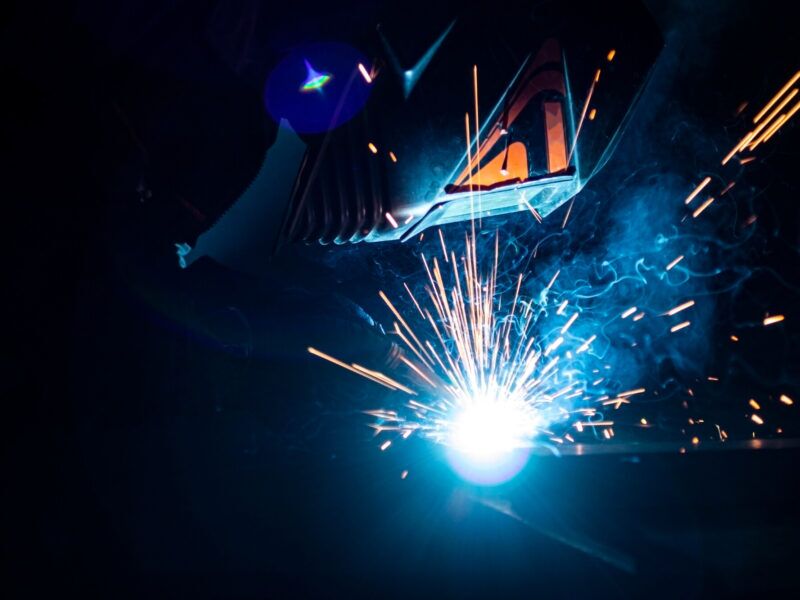Effective Ways to Prevent Weld Undercut in Your Welding Tasks
Effective Ways to Prevent Weld Undercut in Your Welding Tasks
Blog Article
Recognizing the Causes and Solutions for Undercut Welding in Steel Manufacture Procedures
In the world of steel manufacture procedures, the event of undercut welding presents a substantial obstacle that requires a detailed understanding of its causes and viable solutions. The intricate interplay of numerous variables throughout welding operations can result in this undesirable phenomenon, influencing the architectural honesty and total high quality of the welded joints - Preventing weld undercut. By dissecting the root creates of undercut welding and checking out efficient remedial measures, fabricators can elevate the criterion of their craftsmanship and guarantee the production of remarkable metal components
Usual Causes of Undercut Welding
Frequently neglected in metal construction, undercut welding happens due to numerous variables that require thorough attention and know-how to be properly mitigated. Additionally, improper welding techniques, such as using the wrong welding angle or take a trip rate, can additionally add to damage development. The option of welding specifications, such as voltage, present, and cable feed speed, plays a considerable function in the incident of undercut welding.
Influence of Incorrect Welding Parameters
Imprecise welding parameters can dramatically compromise the integrity and top quality of bonded joints in steel manufacture procedures. The influence of incorrect welding parameters shows up in different methods, leading to architectural weak points and flaws in the welded components. One critical facet influenced by incorrect welding specifications is the penetration deepness of the weld. Inadequate heat input due to reduced welding currents or excessively high travel rates can lead to inadequate blend in between the base metals, bring about insufficient joint penetration and weakened bonds. Alternatively, extreme warmth input brought on by high welding currents or sluggish traveling speeds can lead to extreme and burn-through reinforcement, developing a fragile and unstable weld framework. Additionally, wrong specifications such as inappropriate voltage settings or incorrect electrode angles can contribute to irregular weld bead accounts, lack of blend, and enhanced opportunities of problems like damaging. Careful focus to welding specifications is extremely important to make certain the manufacturing of high-grade welds with the desired mechanical buildings and structural stability.
Result of Improper Lantern Angle
Improper torch angle in welding procedures can dramatically impact the quality and integrity of the last weld joints in steel construction processes. Damaging is an usual welding flaw where a groove develops along the weld toe, weakening the joint and endangering its structural integrity.
A lantern angle that is as well steep can lead to insufficient penetration, insufficient combination, and boosted spatter. On the other hand, a torch angle that is too superficial can lead to excessive infiltration, burn-through, and distortion of the base product. Preventing weld undercut. Appropriate torch angle is necessary for making certain constant weld top quality, strength, and appearance
To prevent damaging and other issues brought on by improper lantern angles, welders must be educated to preserve the correct lantern angle throughout the welding process. Normal monitoring and change of torch angles throughout welding can assist attain sound welds with minimal issues.
Function of Inadequate Welding Techniques

One more aspect of poor welding techniques is incorrect weld preparation. Inadequate cleansing of the base metals, inaccurate joint style, or insufficient side prep work can all add to damage welding. Poor protecting gas protection or using the incorrect kind of gas can result in incomplete blend and the development of undercut problems.
To deal with the duty of inadequate welding strategies in click to find out more steel fabrication procedures, it is important to provide thorough training for welders. Appropriate education on welding criteria, joint preparation, and shielding gas option can assist avoid undercut welding and guarantee top notch welds in steel fabrication projects.
Reliable Solutions for Undercut Welding
Attending to undercut welding in steel fabrication requires applying efficient remedies to improve weld high quality and architectural honesty. One of the main services to combat undercut is to adjust welding specifications such as voltage, present, and take a trip speed to make certain proper warmth input and combination. By fine-tuning these setups, welders can stop extreme melting of the base steel and filler material, lowering the likelihood of undercut development.
Additionally, appropriate joint prep work is vital in stopping undercut. Making certain tidy base steel surface areas totally free of contaminants and making use of the proper bevel angle can help promote much better weld infiltration and minimize the danger of undercut - Preventing weld undercut. Utilizing suitable welding techniques, such as oscillating the lantern or weaving, can also aid in dispersing heat evenly and filling up the weld joint effectively, decreasing the possibility of undercut problems
Additionally, choosing the right welding consumables, consisting of electrodes and filler metals, is vital in reducing undercut. Using materials with ideal chemical make-ups and mechanical properties can add to attaining audio welds with very little undercut. Normal evaluation and quality assurance actions need to likewise be implemented to identify and resolve undercut concerns immediately, making certain the general stability of produced metal components.

Verdict
In verdict, recognizing the causes and remedies for undercut welding in metal fabrication procedures is important for attaining top notch welds. By attending to common reasons such as inaccurate welding parameters, improper lantern angle, and inadequate welding strategies, welders can stop undercutting and ensure solid, long lasting welds. It is vital to take notice of these aspects and carry out efficient options to boost the overall welding process and end product quality.

Report this page